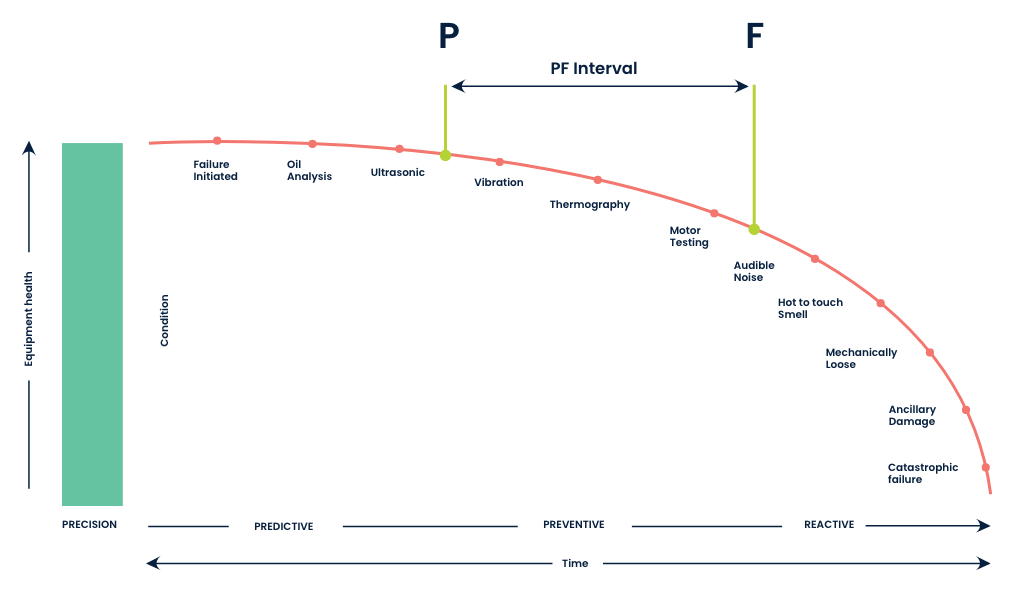Key Components of a Condition Monitoring System
A well-designed condition monitoring system consists of components that work together that monitor and provide data on equipment health. Each component plays a crucial role in the overall functionality of the system. Some of these components are:
1. Sensors and Monitoring Devices
These devices are responsible for collecting data from the equipment being monitored. Various types of sensors are used to measure different parameters, such as:
- Vibration sensors: Measure the vibrations produced by rotating machinery, helping detect misalignments, imbalance, and defects.
- Temperature sensors: Monitor the temperature of critical components to identify overheating or abnormal temperature fluctuations.
- Pressure sensors: Measure fluid pressure in hydraulic and pneumatic systems, detecting potential leaks or pressure variations.
- Oil analysis sensors: Analyze the quality and condition of lubricating oil to identify contaminants, degradation, and debris.
- Acoustic sensors: Detect abnormal sounds and noise patterns that indicate potential equipment issues.
2. Data Acquisition System
The data acquired from the sensors needs to be collected and transmitted for further analysis. A data acquisition system ensures that the data is accurately captured, digitized, and sent to the central monitoring unit. It serves as a bridge between the physical sensors and the data analysis software.
3. Data Analysis Software
The collected data from the sensors requires extensive analysis to uncover patterns, trends, and deviations that indicate potential asset health issues. Software like a CMMS processes and interprets the data, using various algorithms and techniques to identify anomalies and potential faults. It provides maintenance teams with actionable insights and diagnostic information.
4. Central Monitoring Unit
The central monitoring unit acts as the central nervous system of the condition monitoring system. It receives and stores the data collected from the sensors and houses the data analysis software. This unit provides a centralized platform for real-time monitoring, data management, and decision-making.
5. Alert and Notification System
The alert and notification system promptly notifies maintenance personnel when abnormal conditions or potential faults are detected. The system sends alerts through various channels, such as email, SMS, or mobile devices, ensuring that relevant personnel are promptly informed to take appropriate actions.
6. Diagnostic and Reporting Tools
To assist maintenance teams in understanding equipment health and making informed decisions, the condition monitoring system provides diagnostic tools and comprehensive reporting features. These tools present data analysis results in graphical reports and dashboards, making data easy to interpret.
7. Integration with CMMS
Integrating the condition monitoring system with a Computerized Maintenance Management System (CMMS) enhances the overall maintenance process. The CMMS incorporates equipment health data from the condition monitoring system, allowing maintenance teams to prioritize and schedule maintenance tasks efficiently. It also helps in managing work orders, spare parts and inventory, and maintenance history.


